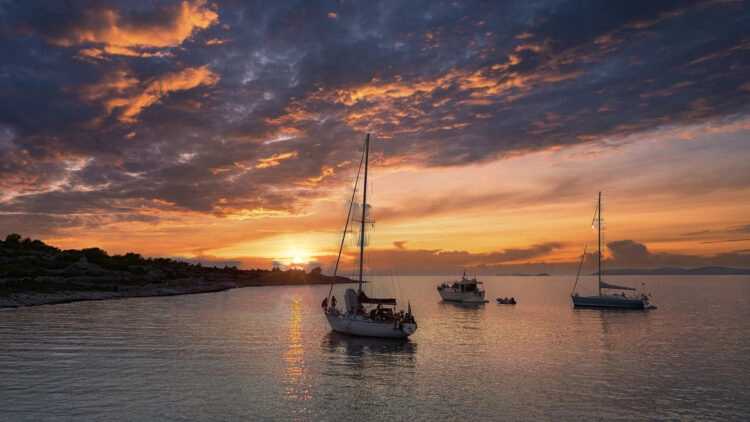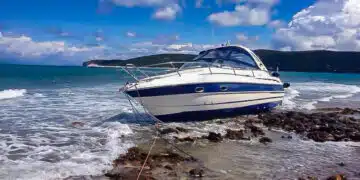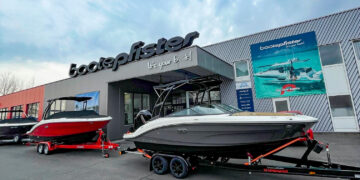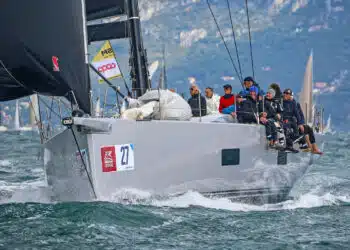Vacations on board are only particularly beautiful when nature is almost untouched and intact. When the water is clear and the beaches are clean. SeaHelp has compiled ten tips on how water sports enthusiasts can easily make an active contribution to environmental protection – so that we can continue to enjoy crystal-clear bays and dreamlike beaches in the future and the biodiversity in the oceans and on the coasts is preserved.
Environmental protection tip 1:
Avoid garbage!
That garbage is not disposed of overboard goes without saying, but every bit of garbage that is saved on board not only relieves the usually small trash can, but also contributes to reducing the volume of waste in the vacation region. So: instead of plastic disposable packaging, it’s better to use reusable containers, transport vegetables and fruit loose in a shopping net, and buy water in large gallons rather than lots of small plastic bottles.
Environmental protection tip 2:
The right sunscreen
About 14,000 tons of sunscreen are estimated to end up in the ocean every year. Many sunscreens, especially waterproof, reliably protect our skin from sunburn, but not the environment. When buying sun care products, make sure they are free of microplastics and do not contain water-soluble synthetic polymers or the chemical UV filter octocrylene. The Hawaii Reef Act clearly states which ingredients in creams cause lasting damage to waters and coral reefs. In particular, the sunscreen filters oxybenzone (benzophenone-3) and octinoxate (ehylhexyl methoxycinnamate) are suspected of damaging coral reefs and causing coral bleaching.
In Hawaii, the sale and use of sun care products containing these ingredients have been banned since the beginning of 2021. Many manufacturers have taken this as an opportunity to stop using the environmentally hazardous substances in their sunscreens.
Environmental protection tip 3:
Save fuel
Economical use of gas already not only the environment, but also the wallet. A few knots less on the speedometer have an impressive effect on the fuel gauge, likewise consumption can be reduced if less energy is needed on board and accordingly less charging is required. Doing without air conditioning has just as positive an effect as not having a freezer. If you still don’t want to do without ice cubes in your cocktail, you can buy a bag of ice cubes ashore, which keep very well for more than 24 hours even when warm in the on-board refrigerator.
Environmental protection tip 4:
Buy local
Kenia beans in the spring? Fresh strawberries in November? If you base your food choices on the seasons and give priority to local products from the region when shopping, you avoid the time-consuming and expensive transport of fresh food over long distances. When walking through a regional market, fresh fruit and vegetables that are just ripe and in season will tempt you. Often the best recipe ideas for the evening meal on board are created this way!
Environmental tip 5:
Anchor properly
Anchor only in designated areas and on a sandy patch! If you dig your anchor deep into the seagrass, you risk tearing 40- to 50-centimeter-wide furrows in the seagrass when the chain drags across the bottom. This destroys the biologically important nursery grounds for many species of fish and shellfish. But seagrass beds are not only important for the fauna: they protect the beaches from erosion and also convert carbon dioxide into oxygen. Seagrass roots grow only about one millimeter per year, so it takes a long time to heal injuries caused by anchors.
For more information on proper anchoring, see our article “Anchoring, but properly: 10 tips for the perfect anchor maneuver“.
Environmental tip 6:
Beach cleaner
There’s a plastic bag floating in the water, the tide has washed up plastic waste and there’s still a carelessly discarded cigarette butt on the beach? Sure, it’s not nice to clean up other people’s trash. But to take note of it and then leave it lying around is even worse. It doesn’t just take the international Coastal Cleanup Day (official website) to lead by example and take action for the good of the environment.
Environmental protection tip 7:
Souvenirs
An empty shell from the beach, a bottle of sand from your favorite cove – many environmentalists are critical of taking these natural souvenirs with you and recommend taking a souvenir photo rather than taking parts of nature, no matter how small and insignificant they may seem. The deciding factor for this recommendation was the report that on a Sardinian beach the sand is running out – because too many have filled a small container for themselves personally.
If you are looking for a souvenir typical of the country in the tourist region, you should make sure when buying that it really was made locally. From a sustainable point of view, products made in China are only suitable as souvenirs when you are on vacation in China. So better browse local markets and artisans and traditional traders, what is suitable as a travel souvenir, which will be gladly taken even after years to hand.
Environmental Tip 8:
The right distance
Those who travel on the water have the opportunity to observe marine animals in their natural environment and enjoy it when unexpected visitors appear during the cruise. A school of dolphins playing at the bow of the ship is as magical an experience as spotting a large sea turtle or a ray floating majestically over the bottom. In order not to disturb the animals, the engine should be throttled down, animal colonies on land, on the cliffs, beaches and rocks should be passed with a protective distance of about 100 meters.
Environmental protection tip 9:
Waste water on board
It would be best for the environment to use toilets and washrooms ashore whenever possible. Those who prefer to enjoy their privacy on board should make sure to use environmentally friendly detergents and recycled toilet paper. And have the integrated tank into which wastewater is discharged on board professionally pumped out at ports.
Environmental Tip 10:
Leave only your footprints!
Actually, it should be a matter of course that you leave the section of beach where was, the cliff to which you make a small excursion, exactly as you found it. This also means that – if there is no trash can on site – you take your trash back on board and throw it into one of the containers in the next port. Nature and the next generation of water sports enthusiasts will thank you!















